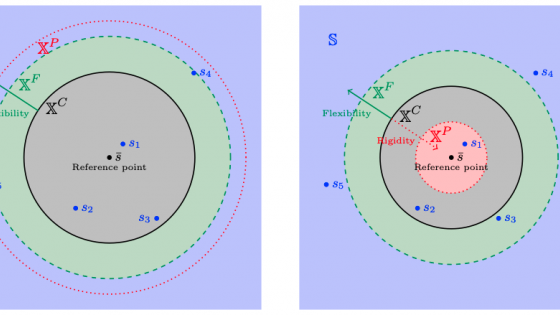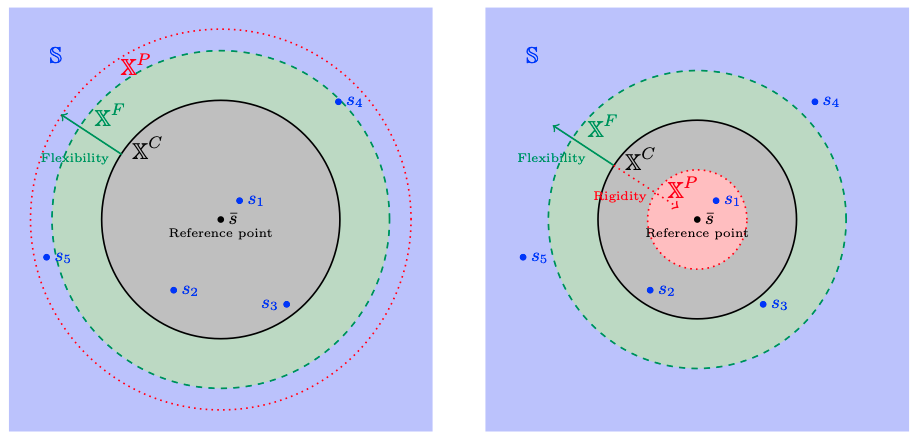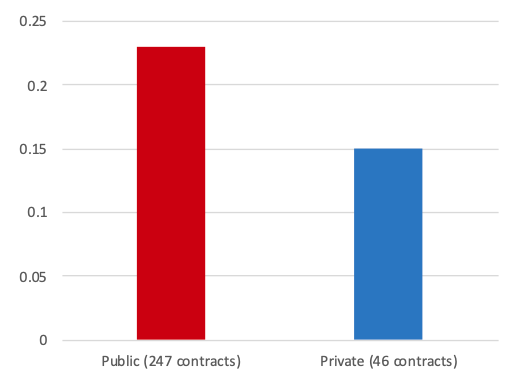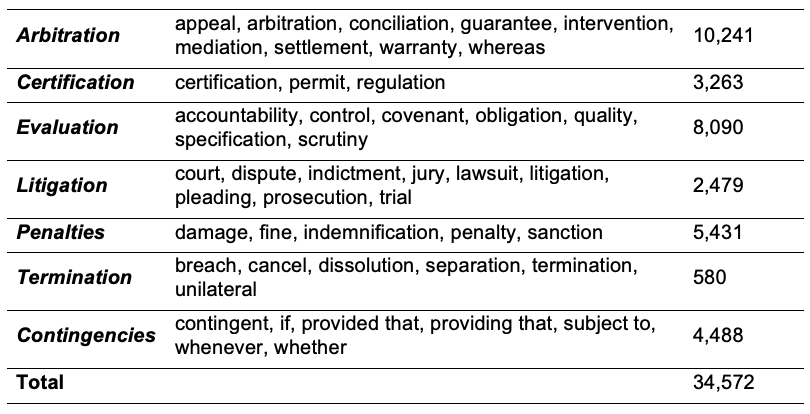Why are public contracts so often renegotiated? Guasch (2004) and Laffont and Tirole (1993) suggest that renegotiations are a consequence of aggressive bidding. Alternative explanations of frequent renegotiations point to government-led renegotiations (Guasch et al. 2007), collusion between government officials and local bidders (Coviello and Gagliarducci 2017), and renegotiations without hold-up that enable incumbent governments to circumvent budgetary rules before elections (Engel et al. 2019).
Regardless of the framework mobilised to analyse public-private contracts, the high rate of renegotiation always comes as bad news and undermines the expected benefits of delegating public services through public contracts. In a new paper (Beuve et al. 2021), we challenge the industrial organisation view on public contract renegotiation.
The specific nature of public contracts
When contracting for complex objectives (e.g., uncertain quality or unpredictable future events), a contract’s survival may be at risk. One way to deal with contract complexity is to rely on informal commitments – i.e. relational contracting. When faced with unforeseen or unexpected circumstances, private contractual parties, as long as the relationship remains worthwhile, adjust their required performance without the need for costly renegotiation or formal re-contracting (Spiller 2008).
Public contracting, on the other hand, seems to be characterised by formalised, standardised, bureaucratic, rigid procedures. Indeed, common wisdom considers public contracts generally less adaptable and more prone to litigation and formal renegotiation than comparable private contracts. A theory of public contracting that accommodates these stark differences between public sector and private sector contracting practices was needed.
Political contestability, renegotiations, and ‘relational’ public contracts
Moszoro and Spiller (2019) and Beuve et al. (2019) show that public contracts tend to be more rigid when public agents face tighter political competition and fear opportunistic challenges to their contractual decisions. From the public agent’s perspective, contractual rigidity minimises the risk of politically motivated challenges. From the contractor’s perspective, contractual rigidity minimises the risk of governmental opportunism, including unfair administrative treatment and creeping expropriation.
We conjecture that tight political competition, by increasing contractual rigidity, leads to more frequent formal renegotiation of public contracts. Due to third-party opportunism that pushes for rigid contracts at their initial stage, the same political hazards should also make public contracts be renegotiated more frequently. Since relational contracting is not an option for public contracts in highly contested political environments, each renegotiation should be traduced into a formal amendment. Thus, the frequent renegotiation of public contracts, instead of being a sign of weakness, provides a ‘relational quality’ (Spiller 2008) and indicates that the parties are willing to adapt through time.
Contractual flexibility and political tolerance
Previous studies on contract renegotiations (Bajari et al. 2009, Hart et al. 1997, Saussier 2000) have stressed complete versus incomplete contracting. In contrast, in our paper we focus on the rigidity versus flexibility dimension of contracts – i.e. a flexible contract leaves room for possible deviation and ex-post adaptation, whereas a rigid contract does not – under political scrutiny.
Contractual flexibility accommodates contingencies not contained explicitly in the contract and allows the avoidance of costly renegotiation. Contractual flexibility, however, makes public contracts susceptible to (the whiff of) corruption. Neither the voters (i.e. the super-principal who gives the mandate to the public agent) nor the political opponents have perfect information about the public agent’s actions and motivations. The information asymmetry regarding the public agent’s actions is conducive to probity challenges from political opponents – sometimes in good faith, but often opportunistically. In anticipation, the public agent will deliberately constrain her contractual flexibility and adopt rigid procedures to reduce the information asymmetry between her perceived and actual actions and to prove probity (Moszoro and Spiller 2019), even when it is not her intent to so behave.
Political tolerance is given by the cultural setup (including trust in institutions), the rule of law, and foremost political contestability – high political competition correlates with low political tolerance, as political opponents will take advantage to overturn the incumbent public agent. If the realised state of the world is outside the political tolerance, the incumbent public agent is replaced, and the contract is renegotiated. Uncertainty over the states of the world may result in technically triggered renegotiations if contractual flexibility is low. Likewise, political opportunism may lead to politically triggered renegotiations if political tolerance is low, such as in politically contestable jurisdictions where political competition and scrutiny are salient.
Our work shows that the probability of contract continuation rises in the set of contractual terms and contractual flexibility and that the probability of a public agent’s continuation in office rises in contractual rigidity and political tolerance. Since a public agent’s benefits from office tenure and contract continuation, she will maximise her expected utility by strategically choosing contractual terms.
Figure 1 depicts a graphical representation of a two-dimensional contractual space S. The left-hand panel shows a contractual environment with large political tolerance (e.g., private-to-private contracting). Realised state of the world s1,2,3 at t1 are within the set of contractual terms XC (grey area), thus contractually safe. s4 is outside the contractual space but within the contractual tolerance XF (green area). If state s5 is realised, albeit politically tolerable, the contract will be subject to renegotiation.
The right-hand panel shows a contractual environment with political scrutiny (e.g., public-to-private contracts). As political tolerance XP shrinks (red area), managers will prefer more rigid contracts, decreasing the contractual XC and flexibility XF spaces, and increasing the states of the world subject to renegotiation. If the realised state of the world at t1 is within XP (e.g., s1), the contract is technically and politically safe, and will continue. If s2 is realised, the contract is within the technical contractual terms, but politically contestable, and the incumbent policymaker may be under political pressure to renegotiate the contract. If s3 is realised, the contract is still technically viable (the contractor is willing to adapt), but politically contestable – the incumbent policymaker will be under political pressure to renegotiate the contract. If s4 or s5 is realised, the contract is technically and politically unviable and will be renegotiated.
This framework yields two testable hypotheses. First, political scrutiny is irrelevant for most private-to-private contracts. Conversely, public agents will trade off contractual flexibility for contractual rigidity to keep political challenges at bay. Consequently, for comparable services, public-to-private contracts are formally renegotiated more often than private-to-private contracts. Second, political contestability increases third-party opportunistic challenges, thus decreasing political tolerance. Public agents respond to such lower political tolerance with higher rigidity and, as a consequence, political contestability leads to higher renegotiation rates.
Figure 1 Contractual environments with large and low political tolerance
Notes: This figure presents a two-dimensional contractual space. S is the set of all possible states of the world upon contract delivery at t1 and s1,2,... are examples of realisations of states of the world at t1. XC (grey area) is the set of contractual terms at t0 (e.g., cost, quality, attributes, and delivery time). XF (green area) is the contractual flexibility, i.e., the tolerance deviation from XC. XP (red area) is the political tolerance for deviations from the contractual reference point. XF and XP are exogenous, and the parties negotiate over XC. The set of contractual terms increases as XC expands (green solid arrow). Contract rigidity increases as XC shrinks towards the reference point (red dotted arrow). The left graph shows a contractual environment with large political tolerance (e.g., private-to-private contracting). The right graph shows a contractual environment with political scrutiny (e.g., public-to-private contracts).
Empirical evidence
At first glance, Figure 2 confirms that the frequency of renegotiations is higher for public contracts than for private contracts.
Figure 2 Frequency of renegotiations
Notes: This figure presents the frequency of renegotiations defined as the number of formal amendments to a contract divided by the time elapsed since its signing. “Public” refers to contracts signed between a municipality and a contractor; “private” refer to contracts signed between a private-sector procurer and a contractor.
To test whether public contracts are renegotiated more often than private contracts, we regress the frequency of contract renegotiations on a dummy variable equal to 1 for public contracts (high public scrutiny) and zero for private contracts (low or even absence of public scrutiny). Our results indicate that public-to-private contracts are renegotiated 7–13% more often than private-to-private contracts. To test whether the frequency of public contract renegotiations rises with political contestability through contractual rigidity, measures for both political contestability and contractual rigidity are needed.
To assess the rigidity levels of the sample contracts, we follow Moszoro et al. (2016) and construct ‘dictionaries’ by which they machine-read rigidity categories: arbitration, certification, evaluation, litigation, penalties, termination, and contingencies. The rigidity categories capture relevant contractual clauses intended to signal probity and lower the likelihood of challenges by third parties. Table 1 presents the list of search terms which also includes derivative words.
Table 1 Search terms grouped into rigidity categories
In France, even if two parties can be legitimately defined as dominant, political fragmentation is usually high and other political forces – extremist, centrist, and green parties – play an important role, and it is common to have city mayors who belong to one of these not-dominant parties. Consequently, we base our measures on the number of effective parties (NEP, which is the inverse of the sum of squared vote shares for each party).
Further, we instrument contractual rigidity with measures of public scrutiny and political competition. The results show that an increase in one standard deviation in each category of contractual rigidity increases contract renegotiation by 7.7–10.5%, a substantial increase from an unconditional average of 22%. In sum, public contracts are renegotiated more frequently than comparable private contracts due to their higher procedural rigidity, which is how public agents minimise the risks of opportunistic challenges from political competitors.
Our results suggest that previous empirical studies pointing to the inefficiencies of public contracts related to high renegotiation rates are flawed. Frequent renegotiations observed in public contracts can be understood in part as a consequence of their non-remediable rigid nature instead of a manifestation of opportunistic behaviour, whether by bidders or public agents.
Authors’ note: The views expressed herein are those of the authors and should not be attributed to the IMF, its Executive Board, or its management.
References
Bajari, P, R McMillan, and S Tadelis (2009), “Auctions versus negotiations in procurement: An empirical analysis”, Journal of Law, Economics and Organization 25(2): 372–399.
Beuve, J, M W Moszoro, and S Saussier (2019), “Political contestability and public contract rigidity: An analysis of procurement contracts”, Journal of Economics and Management Strategy 28(2): 316–335.
Beuve, J, M W Moszoro, and P T Spiller (2021), “Contractual Rigidity and Political Contestability: Revisiting Public Contract Renegotiations”, NBER Working Paper 28491.
Coviello, D, and S Gagliarducci (2017), “Tenure in office and public procurement”, American Economic Journal: Economic Policy 9(3): 59–105.
Engel, E, R Fischer, and A Galetovic (2019), “Soft budgets and endogenous renegotiations in transport PPPs: An equilibrium analysis”, Economics of Transportation 17: 40–50.
Guasch, J L (2004), Granting and Renegotiating Infrastructure Concessions: Doing it Right, Washington, DC: World Bank Publications.
Guasch, J L, J-J Laffont, and S Straub (2007), “Concessions of infrastructure in Latin America: Government-led renegotiations”, Journal of Applied Econometrics 22(7): 1267–1294.
Hart, O, A Shleifer, and R W Vishny (1997), “The proper scope of government: Theory and an application to prisons”, Quarterly Journal of Economics 112(4): 1127–1161.
Laffont, J-J, and J Tirole (1993), A Theory of Incentives in Procurement and Regulation, Cambridge, MA: MIT Press.
Moszoro, M W, and P T Spiller (2016), “Coase and the transaction cost approach to regulation”, in C M ́enard and E Bertrand (eds.), The Elgar Companion to Ronald H. Coase, Chapter 19, 262–275, Cheltenham, UK: Edward Elgar Publisher.
Moszoro, M W, and P T Spiller (2019), “Political contestability and public contracting”, Journal of Public Economic Theory 21(5): 945–966.
Saussier, S (2000), “Transaction costs and contractual incompleteness: The case of Électricité de France”, Journal of Economic Behavior and Organization 42(2): 189–206.
Spiller, P T (2008), “An institutional theory of public contracts: Regulatory implications” NBER Working Paper 14152.









